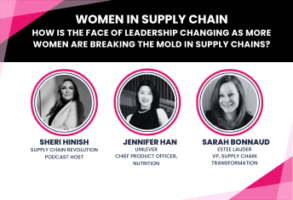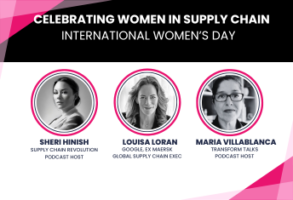This analysis examines the interconnectivity between human behavior, industrial elements, and natural elements across the linear processes in the textile and clothing system. Using a systems-level perspective, it shows how biological and technical resources are wasted in material extraction and harvesting, the production of goods, and consumption or use by humans. The analysis of waste focuses on the material flows of non-energy related materials. The impact to natural systems and energy-related materials is not emphasized.
System Introduction
The linear economy adopts an approach of take, make, use, dispose without considerations to comprised systems, each containing an interconnected set of elements organized around some purpose (De Vries, 2013). A broad understanding of system behavior explains the dependencies, influences, and potential consequences of each decision as it relates to the whole (Holling, 2001). Though the textile and clothing system is primarily concerned with the design, production and distribution of yarn, cloth and clothing, the intricacies and system dynamics specific to the fashion industry are far from basic (Amed, Berg, Brantberg, & Hedrich, 2016). The fashion industry fuels a linear economy with waste greater than $460B of value each year through unsustainable disposal of clothing (Ellen MacArthur Foundation, 2017). This analysis will explore the system described as textile to garment through depiction of linear process, flow of materials, and types of waste by each actor across the supply chain (Franco, 2017).
Human Perspective
With a population projected to reach 1.2B by 2025, consumerism has played an integral role in the evolution of industrialization, mass production, and values that marry progress and prosperity with compulsive acquisition (Goodwin, Nelson, Ackerman, & Weisskopf, 2008). Consumption signals a supply chain, and it responds through the acquisition of materials, manufacturing, and distribution of goods, creating inefficient use of natural resources, pollutants, and waste (Shah, 2014).
Abraham Maslow, renowned professor of psychology and human behavior, classifies all human efforts as an attempt to fulfill one of five needs. Humans require clothing to fill basic physiological and safety needs. However, the dynamics and influences that connect the linear economy and textile and clothing system are complex because economic performance is tied to human behavior, assessed by the growth and level of real output per person (McAlphin, 2014). Reciprocally, employment is a vital means to realize the income necessary for consumption, both individually and in aggregate terms (McAlphin, 2014). Over twenty-seven million people worldwide are employed in the textile and clothing industry (Amed, Berg, Brantberg, & Hedrich, 2016). Moreover, the system represents seven per cent of the world’s exports in terms of sales: a combined two thirds in North America and Western Europe, and one quarter in China (Cardoso, 2013).
Linear Process
The linear economy embodies a linear process because materials flow in one direction, with sub-optimal utilization of materials and energy, and a shortened life cycle (Varney-Wong, 2016). The textile and clothing system is a linear process as depicted in Figure 1, in which 53 metric tons of fibre are extracted annually to produce clothes that are often used for a short time, after which 73% of the materials are mostly sent to landfill or incinerated (Ellen MacArthur Foundation, 2017). Actors in the textile and clothing system supply chain include: supplier in the extraction and harvesting of raw materials, manufacturer in the production of goods, distribution and transportation as a conduit to the customer, and lastly the consumer who uses and disposes the goods, sustainably or unsustainably (De Vries, 2013). Although design and product commercialization are inputs to the linear process, it is not in the scope of this analysis.
In the United States, clothes are worn one quarter of the global average (Ellen MacArthur Foundation, 2017). The global average life cycle of a garment is two years (WRAP, 2017). The system is characterized by a complex supply chain and is considered to be one of the most polluting industries in the world, with more than 1.2B metric tons a year in greenhouse gas emitted during production alone which is greater than the emissions of end-to-end logistics (Ellen MacArthur Foundation, 2017).
Figure 1: Linear Process Model in Textile and Clothing System (Varney-Wong, 2016)
Biological and Technical Resources
The first actor, the supplier, is responsible for raw materials that are categorized as natural and manmade fibres as shown in Figure 2. Raw materials are inputs to processing and manufacturing using the biological resources sun, water, energy, and land to produce non-toxic materials that can biodegrade and safely feed environmental processes. Key biological resources are cotton and wool where yields are more than 26 mega tonnes and 2 mega tonnes respectively (Cardoso, 2013). Manmade or technical resources are not suitable for the biosphere and cover synthetic materials such as nylon, a polyester derived from petrochemicals, or regenerative cellulose materials that are manufactured from wood fibres (Cardoso, 2013). Technical resources include design, equipment and machinery, capital, data, and labor as inputs to create manmade fibers (Maia, Alves, & Leao, 2013). Blends are also used to give the fabric desirable qualities like breathability.
Figure 2: Raw Materials, Biological, and Technical Resources (Cardoso, 2013)
The volume of the world’s fiber production for the textile and clothing system in 2012 was approximately 88.5 mega tonne, from which 56 mega tonne were manmade, of which 40% was polyester, and 32.5 mega tonne natural fibre, of which 80% was cotton (Cardoso, 2013). The use of manmade fibre represents 64% of overall production, primarily by low cost clothing or fast fashion, and propensity to consume in developed countries (Cardoso, 2013). It is predicted that by 2030, the fashion industry will use 115 million hectares, a 35% increase in land for cotton, forest for cellulosic fibers, and grassland for livestock (Snoek, 2017).
The second actor comprises production and manufacturing, that includes processing to fibre raw materials, spinning, weaving, knitting, coloration, finishing (cutting, sewing, quality, pressing), packaging materials, and staging delivery to the consumer. This step uses technical resources of machinery, labor, capital, technology, and data with biological resources like water, energy, and land, yielding a thirty-six percent loss of material waste as a percent of total production as depicted in Figure 3 (Varney-Wong, 2016). Across the industry, only 13% of the total material input is in some way recycled after clothing use (Ellen MacArthur Foundation, 2017).
Figure 3: Material Waste as a Percent of Total Production (Varney-Wong, 2016)
The third actor, the consumer, is responsible for use and disposal. Use is defined as washing, drying, ironing, and utilizes biological resources of raw materials, water, and energy. The disposal of clothing has the largest impact on the natural environment via landfill or incineration (Rosa, 2016). While natural fibers like cotton and wool produce methane gas, polyester, the most common non-biodegradable synthetic fiber used in the clothing, can remain in landfill soil for several decades (Rosa, 2016).
Wastes
There are eight types of wastes common to Lean Six Sigma methodologies, a widely adopted best practice in efficient production of goods (Maia, Alves, & Leao, 2013). Across a linear process, T.I.M.W.O.O.D.U. characterizes wastes in transportation, inventory, motion, waiting, over production, over processing, defects and underutilizing knowledge management and people (iSixSigma, n.d.). Additional wastes include untapped human potential, poor design, inappropriate systems, and wasted natural resources (Maia, Alves, & Leao, 2013). All of these wastes are present in the linear process of the textile and clothing system.
The textile and clothing industry relies predominantly on 98 million tonnes per year in non-renewable resources; this includes oil in synthetic fibres production, fertilizers to grow cotton, and chemicals to produce, dye, and finish fibers and textiles (Ellen MacArthur Foundation, 2017). During the growing and extraction of raw materials, 93 billion cubic metres of water annually are consumed, contributing to water scarcity (Ellen MacArthur Foundation, 2017). During the ‘take’ process step, other wastes include: transportation (energy in picking, extraction to production), inventory (use of land, pesticides, water, energy), motion (inefficient utilization of human labor), waiting (watering takt time, equipment, and human labor), over processing (excessive pesticides, preservatives), defects (waste water pollution, air emissions, poor demand forecast biased by mass-consumption, data quality, poor design), and underutilization (poor bio-design and poor use available technology to aid in harvesting and extraction) (Maia, Alves, & Leao, 2013) (Cardoso, 2013).
Textile and clothing manufacturing demands huge amounts of energy and water, particularly in wet processing. Wastewater must be properly treated from discharge to remove hazardous chemicals, including mutagens, carcinogens, and teratogens, that cause serious environmental damage including exhaust gases, waste water, and the fabrics (Franco, 2017). Also, synthetic fibers, mainly out of petrochemical base, lead to resource use and GHG emissions from processing fossil fuels (Cardoso, 2013). Poor labor standards and conditions pervade global textiles supply chains including ethical issues of child labor, poor safety infrastructure, forced labor, in addition to low wages and extended work days (Franco, 2017).
During the ‘make’ process step, other wastes include: transportation (energy moving products and information, distribution to consumer), inventory (use of land, chemicals, water, energy, fibre, parts, safety stock, working capital, packaging), waiting (between processes, and for human labor execution), over production (water, energy, noise pollution, dust emissions), over processing (water, energy, excessive chemicals, preservatives), defects (waste water pollution, air emissions, poor demand for energy and water, scrap, data quality), and underutilization (poor leadership making unsustainable decisions, unethical treatment of trading partners, poor bio-design, poor use available technology to aid in smart manufacturing) (Kupsala, 2013).
The consumer may send a waste-ridden demand signal that feeds the linear process during use and disposal. Underutilization of information pertaining to sustainable purchasing, sustainable disposal methods, and total costs of ownership in proper care for clothing, can lead to waste in water, energy, and use of chemicals in washing. Less than 1% of material used to produce clothing is recycled into new clothing, denoting a loss of more than $100B worth of materials each year (Ellen MacArthur Foundation, 2017). High costs are associated with disposal and land filling clothing and household textiles; in the UK the annual cost is approximately $108M (Ellen MacArthur Foundation, 2017). Other wastes include: transportation (energy moving products for early disposal and in landfill), inventory (use of land, water, energy, fibre, working capital tied to having too many garments), and defects (waste water pollution, air emissions, synthetic fibre impact in landfill)(Franco, 2017).
Conclusions
The large and growing global population has a predisposition to mass-consume with systems in place to inefficiently manufacture clothing, placing an extreme strain on materials, resources, and natural systems (Funkhouser, 2012). Emphasis is needed to highlight the extent that supply chains can contribute to global sustainability improvements and waste reduction in textile and clothing systems. As pressure for natural resources and price volatility intensifies, system focus must shift to recovery of materials and blends, water and energy usage, reducing hazardous chemical use, and ensuring ethical human rights (Franco, 2017). Ultimately, industry must leverage more efficient and sustainable practices through material lifecycle management, including shrinking or decreasing use, slowing, or closing material loops (Ellen MacArthur Foundation, 2015).
References
Amed, I., Berg, A., Brantberg, L., & Hedrich, S. (2016, December). The State of Fashion. Retrieved February 19, 2018, from McKinsey & Company: https://www.mckinsey.com/industries/retail/our-insights/the-state-of-fashion
Bove, A., & Swartz, S. (2016, November). Starting at the Source: Sustainability in Supply Chains. Retrieved February 15, 2018, from https://www.mckinsey.com/business-functions/sustainability-and-resource-productivity/our-insights/starting-at-the-source-sustainability-in-supply-chains
Cardoso, A. (2013). Life Cycle Assessment of Two Textile Products: Wool and Cotton.Universidade Do Porto, Environmental Engineering.
Chan, T., & Wong, C. (2012). The Consumption Side of Sustainable Fashion Supply Chain: Understanding Fashion Consumer Eco‐fashion Consumption Decision. Journal of Fashion Marketing and Management, 16(12), 193-212.
De Vries, B. (2013). Sustainability Science. Cambridge: Cambridge University Press.
Ellen MacArthur Foundation. (2015, December 9). Towards a Circular Economy: Business Rationale for an Accelerated Transition. Retrieved February 13, 2018, from https://www.ellenmacarthurfoundation.org/assets/downloads/TCE_Ellen-MacArthur-Foundation_9-Dec-2015.pdf
Ellen MacArthur Foundation. (2017, January 12). Retrieved February 13, 2018, from https://www.ellenmacarthurfoundation.org/publications/a-new-textiles-economy-redesigning-fashions-future
Franco, M. (2017). Circular Economy at the Micro Level: Dynamic View of Incumbents' Struggles and Challenges in the Textile Industry. Journal of Cleaner Production, 168, 833-845.
Funkhouser, D. (2012, April). Population, Consumption, and the Future State of the Planet. Retrieved February 15, 2018, from http://blogs.ei.columbia.edu/2012/04/27/population-consumption-and-the-future/
Goodwin, N., Nelson, J., Ackerman, F., & Weisskopf, T. (2008, January). Consumption and the Consumer Society. Retrieved February 19, 2018, from http://www.ase.tufts.edu/gdae/education_materials/modules/Consumption_and_the_Consumer_Society.pdf
Gracey, F., & Moon, D. (2012, October 7). Valuing Our Clothes: The Evidence Base. Retrieved February 19, 2018, from http://www.wrap.org.uk/sites/files/wrap/10.7.12%20VOC-%20FINAL.pdf
Gutierrez, L. (2010, October). Retrieved February 19, 2018, from PelicanWeb Journal of Sustainable Development: http://www.pelicanweb.org/solisustv06n10page1supp3.html
Holling, C. (2001, August). Understanding the Complexity of Economic, Ecological, and Social Systems. EcoSystems, 4(5), 390-405. doi:10.1007/s10021-001-0101-5
iSixSigma. (n.d.). 8 Wastes of Lean. Retrieved February 20, 2018, from https://www.isixsigma.com/dictionary/8-wastes-of-lean/
Kupsala, H. (2013). Eco-Effective Fashion Theory: How to Implement Cradle-to-Cradle Concept Into Fashion and Clothing Design. University of Lapland.
Liu, J., Dietz, T., Carpenter, S., Alberti, M., Folke, C., & Moran, E. (2007, September 14). Complexity of Coupled Human and Natural Systems. doi:10.1126/science.1144004
Maia, L., Alves, A., & Leao, C. (2013). Sustainable Work Environment with Lean Production in Textile and Clothing Industry. International Journal of Industrial Engineering and Management , 4(3), 183-190.
Marino, A., & Pariso, P. (2016, May). From Linear Economy to Circular Economy: Research Agenda. International Journal of Research in Economics and Social Sciences , 6(5), 270-281.
McAlphin, D. (2014, September 10). U.S. Population and Its Impact on the Environment: Why Curbing Per Capita Consumption Is Not Enough. Retrieved February 15, 2018, from Progressives for Immigration Reform: http://progressivesforimmigrationreform.org/publication/u-s-population-and-its-impact-on-the-environment-why-curbing-per-capita-consumption-is-not-enough/
McAuley, I. (2007, February). Behavioural Economics and Public Policy: Some Insights. Retrieved February 9, 2018, from http://www.ianmcauley.com/academic/bepubpol.pdf
Rosa, A. (2016). Circular Economy in the Clothing Industry: Challenges and Strategies. KTH Industrial Engineering and Management.
Rydberg, A. (2016). Circular Economy Business Models in the Clothing Industry.Uppsala University, Department of Earth Sciences.
Sandvik, I. (2017). Applying Circular Economy to the Fashion Industry in Scandinavia Through Textile-to-Textile Recycling. Monash University, School of Social Science.
Shah, A. (2014, January). Consumption and Consumerism. Retrieved October 10, 2017, from http://www.globalissues.org/issue/235/consumption-and-consumerism
Shankar, A., & Pavitt, C. (2002, July). Resource and Public Goods Dilemmas: A New Issue for Communication Research. The Review of Communication, 251-272.
Snoek, S. (2017). Circular Economy in the Textile Industry. Sweden: Environmental Policy Group.
Strahle, J., & Muller, V. (2017, October 30). Key Aspects of Sustainability in Fashion Retail. Retrieved from Springer Link: https://link.springer.com/chapter/10.1007/978-981-10-2440-5_2
Varney-Wong, J. (2016). The Circular Economy. Retrieved February 16, 2018, Retrieved from http://ingienous.com/sectors/economy/a-new-economic-paradigm-of-prosperity-without-growth/circular-economy/
WRAP. (2017, July). Valuing Our Clothes:The Cost of UK Fashion. Retrieved February 19, 2018, from http://www.wrap.org.uk/sites/files/wrap/valuing-our-clothes-the-cost-of-uk-fashion_WRAP.pdf
Yawson, D., Armah, F., & Pappoe, A. (2009, November). Enabling Sustainability: Hierarchical Need-Based Framework for Promoting Sustainable Data Infrastructure in Developing Countries. Sustainability, 946-959.








